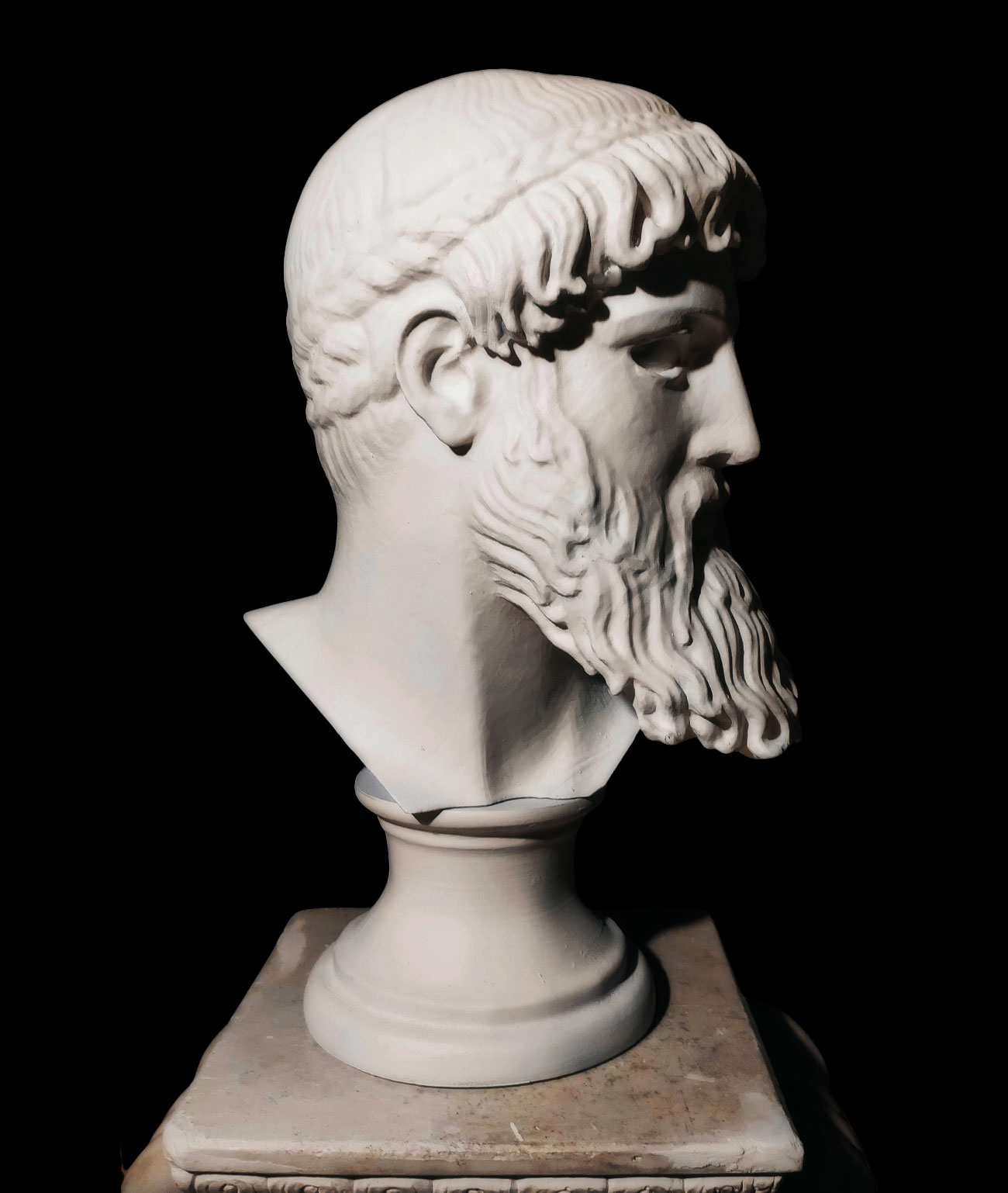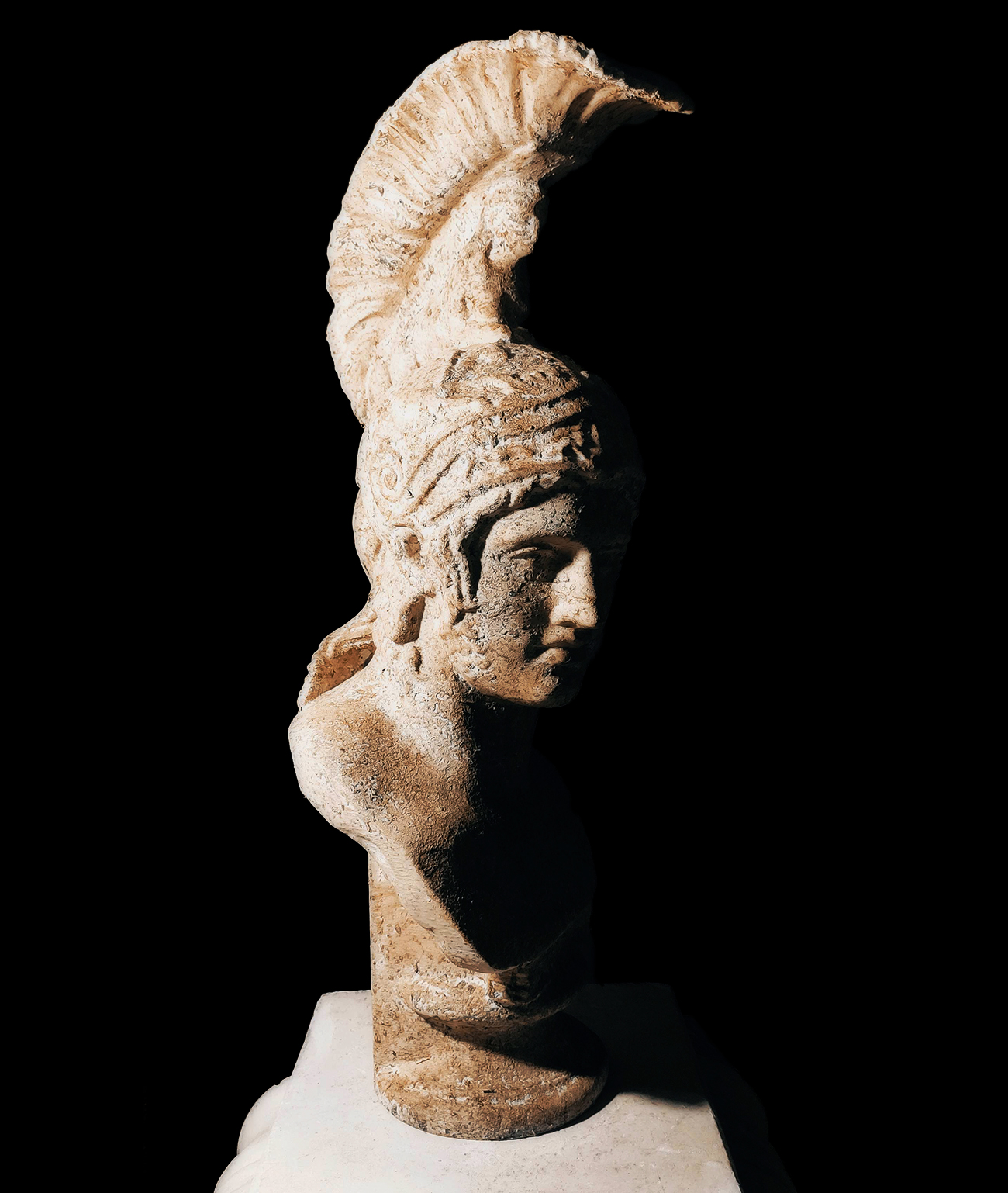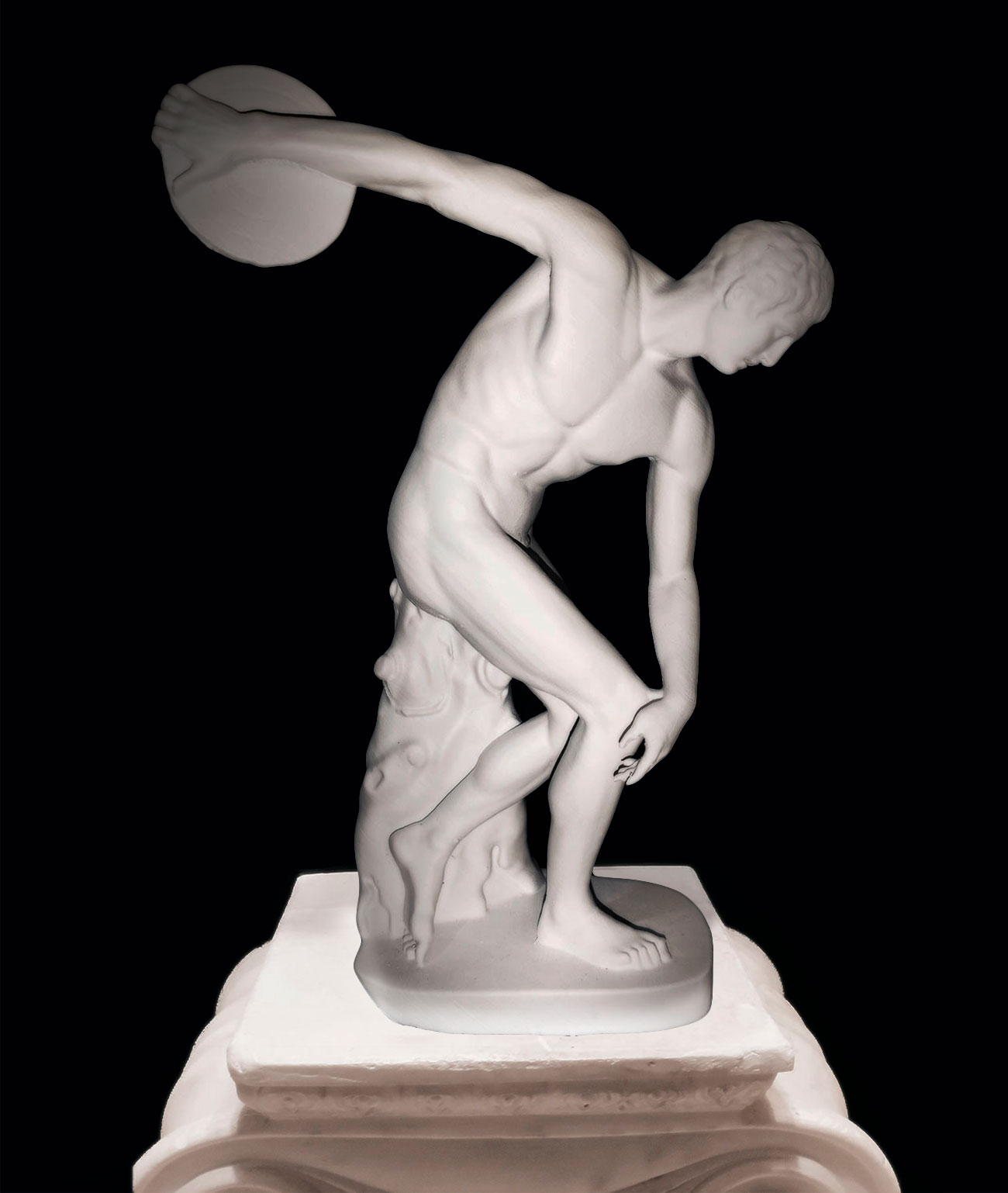Farnese Hercules, Bust 2.0
€69,95 – €225,00 (IVA incluido)
Historical description:
Hercules Farnese (in Italian: Ercole Farnese) is a marble sculpture presumably from the 3rd century AD. C., work of the Athenian sculptor Glykon. It is the most famous copy of a lost original in bronze attributed to Lysippus, a sculptor from the 4th century BC. C. It was found in 1546 in the Baths of Caracalla, in Rome and immediately became part of the collection of classical sculpture of Cardinal Alejandro Farnesio, grandson of Pope Paul III. For generations it decorated the Farnese Palace, until in 1787 it was transferred to Naples, together with the entire Farnese collection, which can be seen in the National Archaeological Museum.
The figure of Heracles, the Greek hero, personified the triumph of man’s valor and courage, over the series of tests that the jealous gods had imposed on him. He, son of Zeus, had been granted the gift of immortality. In the classical period, he had emphasized the role of himself as the savior of humanity, but he also possessed deadly flaws such as lust and greed.
Lysippus’ interpretation of the hero wanted to reflect these aspects of his mortal nature and gave him a portrait that served as a model for the rest of antiquity and fixed the image of Hercules in the European imagination. In fact, in addition to the colossal marble copy exhibited in Naples, two more statues are known, one in bronze, a Hellenistic or Roman copy, found in Foligno and kept in Paris at the Louvre Museum, and one in marble, probably Greek or Roman period, which can be seen in the museum of the ancient Agora of Athens.
The statue represents the tired hero at the end of his work, who rests leaning on his mace. On the mace is the skin of the Nemean Lion, killed by Heracles in one of his labors. With his right hand, behind his back, the hero holds the golden apples from the Garden of the Hesperides, which assure him of eternal life. But in the figure the fatigue of man is represented. The massive musculature gives the impression of exhausted power.
The Farnese Hercules, 317 cm tall, was very famous among the Romans and copies have been found from Roman palaces and gymnasiums. Another copy made in Classical Rome, coarser, was found, from the 16th to the 18th century, also in the courtyard of the Farnese Palace (called the Latin Hercules). This copy was made to form a pair with the Farnese Hercules, and decorate the Baths of Caracalla. In the 18th century, it came to belong to the Neapolitan Bourbons and since then it has been part of the decoration of the main staircase of the Royal Palace of Capodimonte near Naples. Another with the simulated inscription “Lykippos” was in the courtyard of the Pitti Palace in Florence until the 16th century.
Farnese Hercules, burin engraving by Jacob Bos for Antoine Lafréry’s Speculum Romanae Magnificentiae. Inscription: «Omnium elegantissimum Herculis signum Gliconis Atheniensis peritissimi artificis manu fabrefactum, quod Paulo III Pont. Max. in thermarum Antoniniarum ruderibus inventum, et in domus Farnesianae ad campum Florae interiori porticu locatum». On the stone, in Greek characters, the signature: GLYCON ATHENAIOS EPOI. BritishMuseum.
The statue of the Farnese Hercules was rebuilt and restored in various stages. According to a letter from Guglielmo della Porta, a disciple of Michelangelo, who was the one who made the arrangements for Cardinal Farnese, the head was found separated from the body, in a well in Trastevere. The missing left hand and forearm were replaced with a plaster reconstruction. The legs were considered lost and Della Porta himself was commissioned to make new ones. His work was so perfectionist that, when the original legs were later found in excavations at the Baths of Caracalla, replacement legs were left for the statue on the advice of Buonarroti, to show that modern sculptors had nothing to envy to the classics. The original legs, which were in the Borghese Collection, were not restored to the statue until 1787. Goethe, on his trip to Italy, explains the impression he had on seeing the sculpture with each of the different sets of legs, and he marveled at the clear superiority of the originals.
The fame of the Hercules in the courtyard of the Farnese Palace spread thanks to a series of reproductions, such as the engraving by Jacob Bos included in the Speculum Romanae Magnificentiae (‘Mirror of Roman Magnificence’, 1562), or the one made by Hendrick Goltzius (1590 -1591) and a sketch by Rubens that made it known to the Western public. It even came close to ending up in the Louvre during the Napoleonic era, at the request of the emperor.
After the statue was discovered in Rome, in 1574 Diego de Pesquera made the first large copy of the Farnese Hercules in Seville. Destined to crown one of the two columns that formed the first civil monument
---------- Compartir producto ----------
PRODUCTOS RELACIONADOS:
Productos relacionados
-
Portrait of a Pergamene Prince / The Hellenistic Ruler
€74,95 – €210,00 (IVA incluido) Seleccionar opciones







